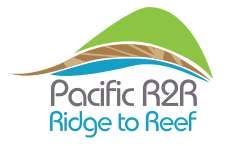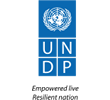Each national R2R Program project will feature a representative, multistakeholder Steering Committee including relevant local and national government agencies, NGO/CBO, private sector and UN system participants (known as a national inter-ministry committee (IMC) building on the structures that have already been established in each PIC through the existing UNDP/UNEP/GEF IWRM project). National IMCs will meet bi-annually to review progress, provide strategic advice and support adaptive project management.
Expected Outcomes:
- Ridge-to-Reef approach achieved in demonstration sites through the scaling up of IWRM and introduction of ICM towards integrated management of natural resources and to reduce watershed and coastal pollution in priority catchments;
- Improved terrestrial and marine biodiversity conservation in priority catchments and linked coastal areas;
- Carbon stocks restored and enhanced in priority catchments and coastal areas;
- Sustainable forest management (SFM) achieved through institutional strengthening, demonstration pilots andinnovative schemes in priority catchments;
- Sustainable financing schemes developed to support biodiversity conservation and integrated approaches,including REDD+ in priority catchments Improved resilience to climate change of island ecosystems and communities in priority catchments
Expected Outputs:
- Catchment level and coastal area integrated approaches (ICM/IWRM) introduced and/or scaled up in priority sites for 14 PICs;
- Measurable pollution reduction, enhanced water use efficiency, other measureable IWRM impacts, and SLM implemented in Ridge-to-Reef national pilot demonstration sites in14 PICs;
- New terrestrial protected areas declared and protected in at least 6 PICs Coastal ‘blue forest’ conserved incritical sites in around 7 PICs;
- Reforestation and restoration of degraded forests in 7 watersheds in at least two PICs (Fiji and Tonga) resulting in the sequestration of CO2;
- Support for Reducing Emissions from Deforestation and Forest Degradation (REDD+) readiness through country dialogues and other schemes in around 4 PICs;
- Innovative system-level sustainable financing plans and schemes (e.g., PES, trust funds) supported by valuation studies for protected areas and landscapes developed in around 5 PICs;
- Climate change risk and vulnerability assessments conducted / updated / refined in priority sites in around 10PICs and integrated into ICM-IWRM and land and forest management plans as well as diagnostic analyses.
- Integrated (including ecosystembased) and community-based approaches implemented in sites in PICs as noted in local plans





